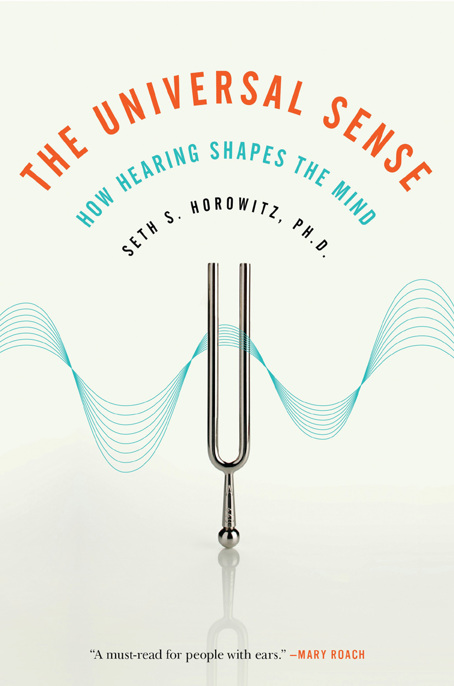
The Universal Sense
How Hearing Shapes the Mind
- اطلاعات
- نقد و بررسی
- دیدگاه کاربران
نقد و بررسی

Starred review from July 9, 2012
Brown University neuroscientist Horowitz has pulled off an unusual feat. His science book, about the way hearing shapes the “evolution, development, and day-to-day function of the mind,” can be genuinely poetic. It is also laced with humor. Horowitz says he attempted less a text than a venue for imparting “wonder.” He succeeds, unearthing one little-known gem after another. There are no deaf vertebrates, signaling hearing’s importance. Everywhere there is energy, there is sound: solar winds “howl”; black holes thrum in B-flat. Human hearing is “faster-than-thought,” can capture “a wide range of tones and timbres that visual color cannot hope to match,” and more “flexibility” than taste and smell. All this lets sound “drive a fantastic range of subconscious elements in the living organism.” Horowitz beautifully describes how the evolution of fervently communicating life forms changed the sounds of early earth “from incidental noise to songs.” He explains how hearing rewires our brains into adulthood, and notes that hearing can prompt our neurons to release pleasurable oxytocin when exposed to musical frequencies, yet sicken us at other frequencies (inner-city noise has been linked to heart problems). The ability to hear is still, by and large, a mystery. This is an often eloquent introduction to what is known.

August 1, 2012
How our sense of hearing affects how we think, feel and act. "What we think of as sound," writes Horowitz (Neuroscience and Psychology/Brown Univ.), "is split between two factors, physics and psychology." This dichotomy forms the framework of the author's debut book, with chapters examining both how we hear sounds and the effects those sounds have on our brains. Horowitz first spends several chapters on how hearing works, using bullfrogs as the model animal to demonstrate how low-frequency sound works, then flipping to bats to discuss high-frequency sounds. After establishing the physical mechanics of hearing, Horowitz moves on to what he calls "psychophysics": the relationship between what we hear and how we react. For example, a recording of angry bees is "almost universally frightening"; even elephants will move away from the sound and call out a warning to others. While there are some interesting factoids like this scattered throughout the book--e.g., readers will be surprised to hear that herring emit bubbles from their anuses to make ultrasonic noises--these moments are few and far between, with most examples coming off as bland illustrations for whatever is being analyzed in a particular chapter. Throughout, the prose is stuffy and overly explanatory and academic, and Horowitz punctuates the text with heavy-handed quirky asides. Each chapter begins like a new week's lecture, and, ultimately, the book never manages to coalesce around any overarching idea. A fairly dreary read about what should be a fascinating subject.
COPYRIGHT(2012) Kirkus Reviews, ALL RIGHTS RESERVED.




دیدگاه کاربران